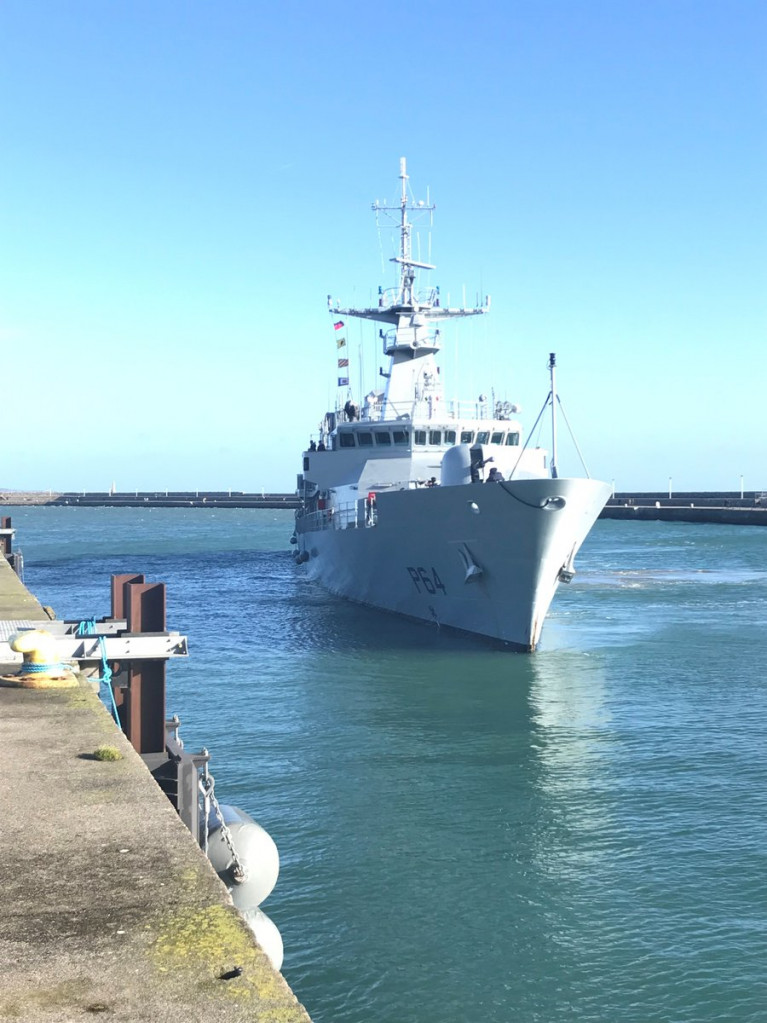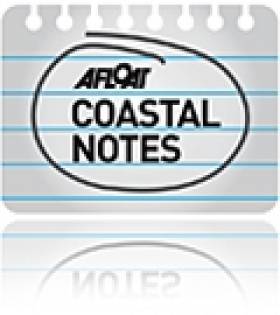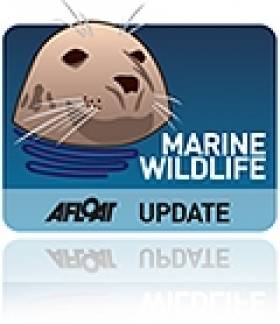Displaying items by tag: East Coast
Navy Patrols Based Out of Dun Laoghaire Harbour An 'Obvious' Choice, Says Fine Gael TD
A major development of our defence forces is necessary following the Report of the Commission of the Defence Forces, a Fine Gael TD has said.
Deputy Jennifer Carroll MacNeill, a TD for Dún Laoghaire, said that we can be “ambitious” with our goals for the military.
“There is a need to get quickly to ambition level 2 and to provide a pathway to ensure that this State can properly protect itself and its surrounds and respond to the needs of our citizens in difficulties around the world,” she said.
“Brexit has proven that the stability of status quo cannot be taken for granted and we have a need to develop the security of the East Coast (see Dun Laoghaire story) and the capacity to patrol the Irish sea effectively.
“The report clearly identifies the need for an enhanced national Recognised Maritime Picture to monitor Ireland’s territorial waters and Ireland’s Exclusive Economic Zone.”
The Dublin People has more to report.
Bathing Bans For More East Coast Beaches
#BathingBan - Following the news of swimming bans at Killiney and Sandycove Harbour, The Irish Times reports on similar advisories on more beaches on the east coast coming after last weekend's heavy rain.
Elevated bacteria levels have been detected this week at Bettystown in Co Meath, Clogherhead and Templetown in Co Louth, Dollymount Strand on Bull Island, Howth's Claremont Beach and Loughshinny Beach between Rush and Skerries.
All locations have been retested with results awaited within the next few days. Contamination from floodwaters is suspected to be the most probable cause.
The Irish Times has more on the story HERE.
Algal Bloom On East Coast Beaches Under Observation
#AlgalBloom - The Marine Institute says it is currently monitoring an algal bloom on beaches on the east coast of Ireland as a part of its Phytoplankton Monitoring programme.
The bloom was detected two weeks ago using satellite images and information provided by the Environmental Protection Agency (EPA) and Wexford County Council.
The Marine Institute has analysed a number of samples from the algal bloom and has identified the species as Phaeocystis pouchetii, a common species that has caused blooms along the east coast several times in previous years. The species causes discolouration of the water, and foaming on the beach in windy conditions.
Joe Silke of marine environment and food safety services at the Marine Institute emphasised that the species is not directly harmful to humans either through swimming or from consuming fish that have been exposed to the bloom.
Beaches remain safe despite any discolouration of water, though the production of foam, and in some extreme cases anoxia, can result in marine organism mortalities.
However, unlike last summer's destructive algal bloom on the west and north coasts that was responsible for significant fish and shellfish kills from Galway to Donegal, fish mortalities caused by this particular species in previous Irish blooms have not been observed, as wild fish tend to avoid the bloom. This may explain the low catches reported by sea anglers on the east coast in recent weeks.
Several fishermen have also reported clogging of nets in recent weeks, which may be caused by the decaying bloom sinking to the seafloor.
Algal blooms are commonly detected over the summer months in coastal areas. It is likely that this particular bloom will dissipate in in the next week or so and will be replaced with the normal succession of microalgae that form the bottom of the food chain in the sea.
Bottlenose Dolphin Pod Seen Again Off Dublin Coast
#MARINE WILDLIFE - They were thought to have disappeared from the east coast in October after delighting wildlife enthusiasts in Dublin and Wicklow.
But concerns that one of the group had died were swept side when the pod of three bottlenose dolphins was once again spotted off Killiney recently.
The Wicklow People reports that the two adults and one juvenile reappeared almost two weeks ago, and have been seen daily "putting on great displays of leaping, breaching, and tail slapping".
Fears were that tragedy had befallen the group when two bottlenoses were seen off Skerries and Balbriggan in late October, and a juvenile was found dead in Portmarnock shortly after.
As previously reported on Afloat.ie, some 200 sightings of the dolphins between Dalkey Island and Wicklow town in recent months were validated by the Irish Whale and Dolphin Group (IWDG).
According to the IWDG, evidence suggests that the pod is now resident off the east coast.
The Wicklow People has more on the story HERE.
Body of Garda Drowned in Flash Flood Recovered
The body of an off-duty garda who was swept away by floodwater in Co Wicklow during Monday's torrential rain has been recovered.
The Irish Times reports that 25-year-old Garda Ciaran Jones was pulled into the River Liffey at the Ballysmuttan Bridge around 7pm on Monday while warning motorists not to cross the bridge.
A search and rescue operation was immediately launched involving the Irish Coast Guard, the Garda helicopter and mountain and river rescue teams, according to the Irish Examiner.
His body was eventually found at 9am yesterday morning some 4km downstream of the incident.
Supt Eamon Keogh of Blessington Garda Station noted that Garda Jones had been crossing the bridge to warn an oncoming car when he was swept into the swollen river by a sudden surge of water.
Taoiseach Enda Kenny led tributes to the young garda as well as a woman who died at her home in Dublin during the flooding that caused chaos across the east of Ireland on Monday evening, with several inland waterways bursting their banks.
Irish Sea to Get More Super Yachts
The Irish Sea and possibly the Irish East Coast may see more super yacht traffic thanks to an Isle of Man Government initiative aimed at registering more Super yachts on the island after the Monaco Yacht Show later this month. Four government representatives are travelling to the famous tax haven in the hope of attracting more business.
The island's super-yacht industry has grown by 20% in the past year and there are currently 95 commercial yachts registered with the Manx flag.
The Isle of Man government is confident business will increase as a result of having a presence in Monaco.
Director of the Isle of Man Ship Registry Dick Welsh told the BBC: "It is difficult to quantify how much the industry is worth to the Isle of Man.
"The registration charge is £700 but then there is the technical management, crew management, chartering and insurance.
"It's a thriving industry which employs around 100 people on the Island."
More from the BBC HERE.




























